Australian Tropical Rainforest Plants - Online edition
Memecylon pauciflorum Blume
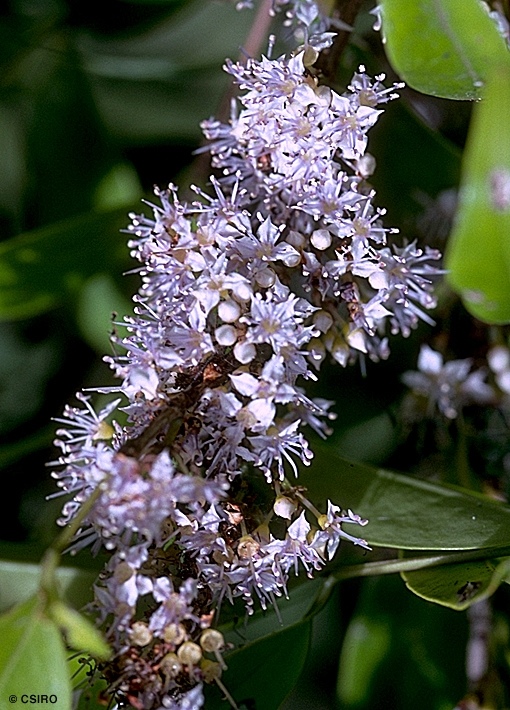
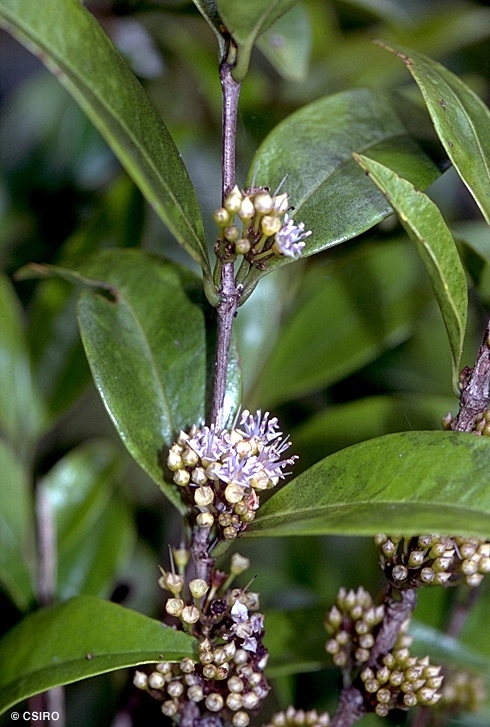
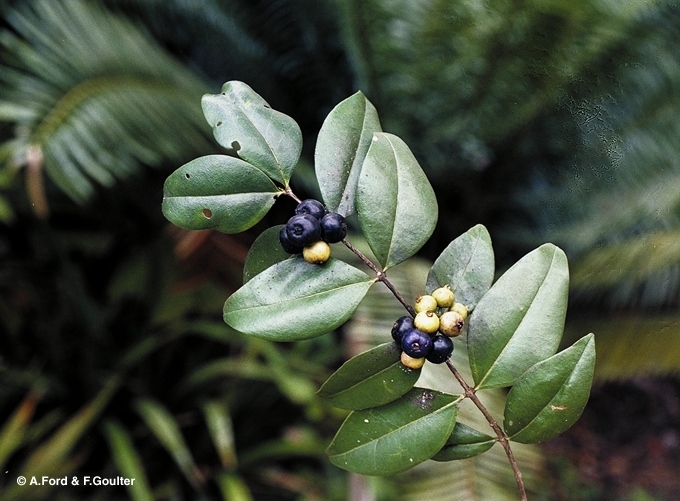
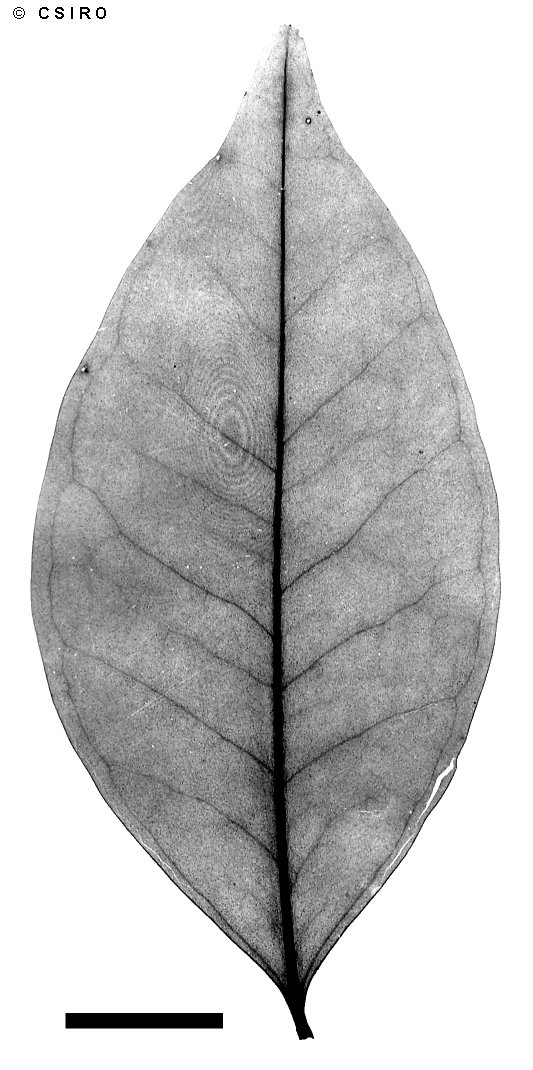
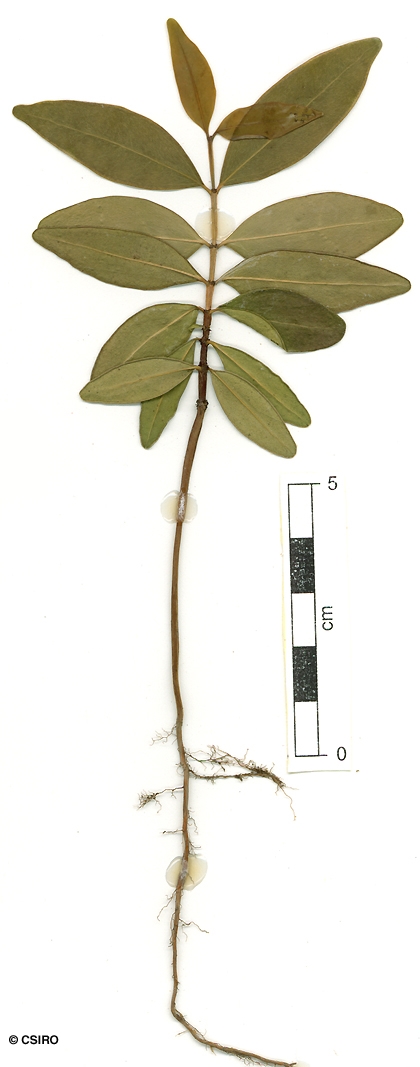

Blume, C.L. von (1850) Museum Botanicum Lugduno-Batavum 1 : 356. Type: Timor.
Memecylon
Seldom exceeding 30 cm dbh.
Leaf blades about 3-7 x 1-3 cm. Lateral veins scarcely visible on the upper surface but forming inconspicuous loops or an intramarginal vein very close to the margin. Small oil dots visible with a lens. Stipules absent but scars resembling stipular scars are visible on the twigs between the petioles. Petiole grooved on the upper surface.
Inflorescences shorter than the leaves. Flowers small, petals about 2 mm long. Stamens eight, anthers with a long spur at the base and a raised gland on the spur on the opposite side to the filament attachment.
Cotyledons +/- semiorbicular, 16-20 x 15-30 mm, shortly petiolate. Cotyledonary stipules usually visible. Hypocotyl winged. At the tenth leaf stage: leaves linear, narrowly elliptic or elliptic, glabrous. Stipules usually visible or stipule-like structures visible. Seed germination time 20 to 63 days.
Occurs in WA, NT, CYP, NEQ, CEQ and southwards to south-eastern Queensland. Altitudinal range from near sea level to 400 m. Grows as an understory tree in monsoon forest, drier or more seasonal rain forest, open forest, woodland and littoral forest. Also occurs in SE Asia and Malesia.





